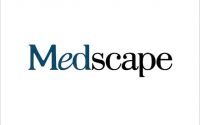DirectTrust acquires SAFE Identity, aims to expand interoperability use cases
The nonprofit health alliance DirectTrust announced Tuesday that it had acquired the assets of SAFE Identity, including its trust framework.
As an industry consortium and certification body supporting identity assurance in healthcare, company representatives say SAFE Identity has maintained one of the longest-standing trust frameworks in healthcare.
“With its incorporation into DirectTrust, the SAFE community is about to embark on a new chapter to remain in lockstep with the progress being made in the realm of digital identity across healthcare,” said Kyle Neuman, currently managing director at SAFE and the incoming director of trust framework development at DirectTrust.
DirectTrust representatives declined to disclose the deal’s financial details.
WHY IT MATTERS
DirectTrust supports secure electronic exchanges of protected health information between provider organizations, and between providers and patients, for the purpose of improved coordination of care.
It has created DirectTrust Identity to house the SAFE Trust Framework and to operate the SAFE infrastructure used by multiple large pharmaceutical companies to securely interact with federal agencies and business partners in the United States and globally.
“Since our inception, DirectTrust has focused on instilling trust in electronic health communication with the goal of improving health for individuals and populations,” said Scott Stuewe, president and CEO of DirectTrust, in a statement.
“Both the DirectTrust and SAFE Identity trust framework communities seek to enable safe and secure transactions through the use of identity-assured credentials backed by a public key infrastructure and consensus-based policies,” he added.
Stuewe told Healthcare IT News that the incorporation will allow members to offer new services to their clients, such as strong credentials that can be used for signing documents and authenticating to systems, including with federal agencies.
“Additionally, this infrastructure allows DirectTrust to support an identity ecosystem for trusted and interoperable consumer credentials,” Stuewe added.
“This is not to replace or to compete with companies that offer this commercially, but rather to allow credentials issued by any of the participating entities to be trusted by any other to improve consumer experience,” he continued.
“Ultimately, this could look like having one set of trusted credentials to log in to different patient portals,” he said.
Stuewe noted that the acquisition provides opportunity for potential use cases with clinical research organizations that need to communicate with both constituencies.
“Finally, the new membership and assets in DirectTrust represents an opportunity to move beyond national communication to trusted global health communication use cases as well,” he said.
Stuewe spoke to potential for addressing trust-in-identity, which he called “one of the most vexing interoperability problems.”
“Using the trust frameworks, DirectTrust seeks to play a [coordinating role] to support trust-in-identity for the many people, organizations, documents and devices involved in healthcare, so that they can, in turn, trust one another,” he said.
He compared trust frameworks to the way Visa and Mastercard operate as trust frameworks that facilitate global banking transactions.
“Like they have agreements on policies and standards both within and between their trust frameworks, the same kind of scalability that the DirectTrust ecosystem has enabled will also be possible for the FHIR ecosystem,” he went on.
“The SAFE Identity Bridge is an important piece of infrastructure to allow for this kind of scalability while still enabling decentralized identity deployed by a multitude of players,” he said.
THE LARGER TREND
The announcement of DirectTrust’s acquisition follows news of its major milestone earlier this year, when the company hit two billion secure exchange transactions since it started tracking them in 2014.
According to the company, the number of patients and/or consumers using Direct increased to 565,000 by the end of 2020 – an 89% jump from the previous year.
DirectTrust also began piloting its secure instant messaging standard in 2020, which aims to offer real-time healthcare communication between known, trusted entities within and across healthcare organizations.
ON THE RECORD
“I’m excited to help DirectTrust facilitate better communication and better data sharing within a particular industry – such as biopharmaceuticals or healthcare delivery, as was the case in the past – and perhaps more profoundly, between all of the industries that make up healthcare,” said Neuman in a statement.
Kat Jercich is senior editor of Healthcare IT News.
Twitter: @kjercich
Email: [email protected]
Healthcare IT News is a HIMSS Media publication.
Source: Read Full Article


